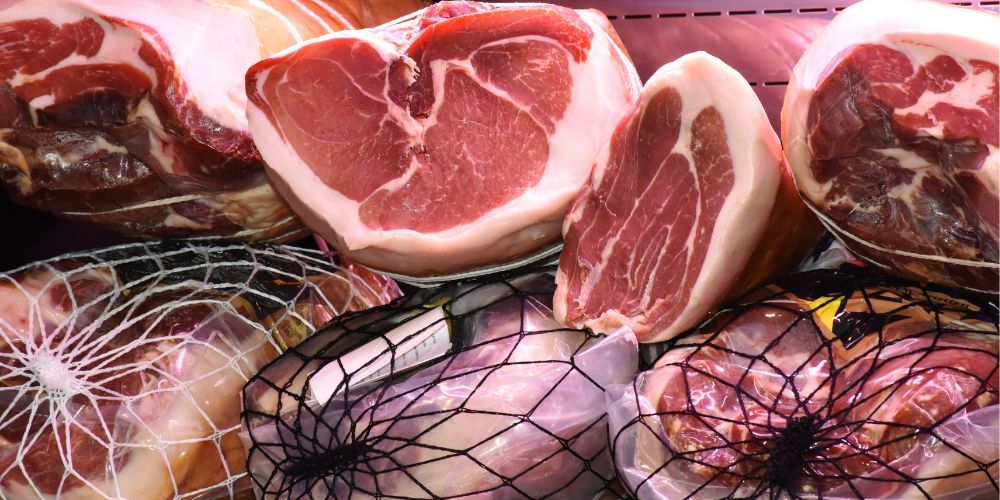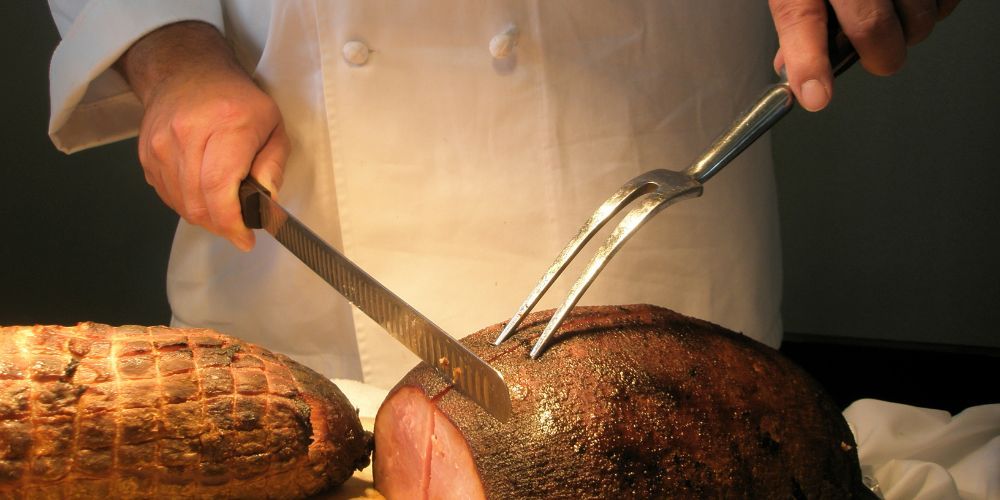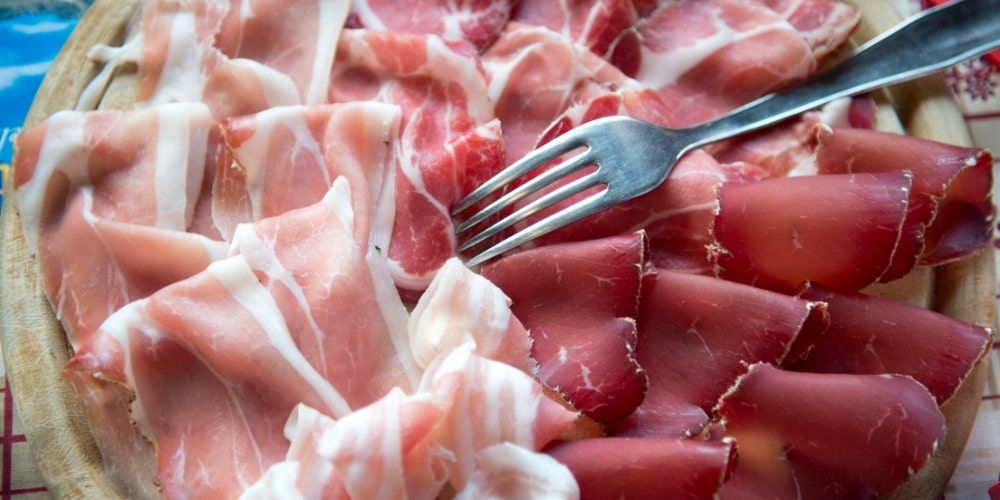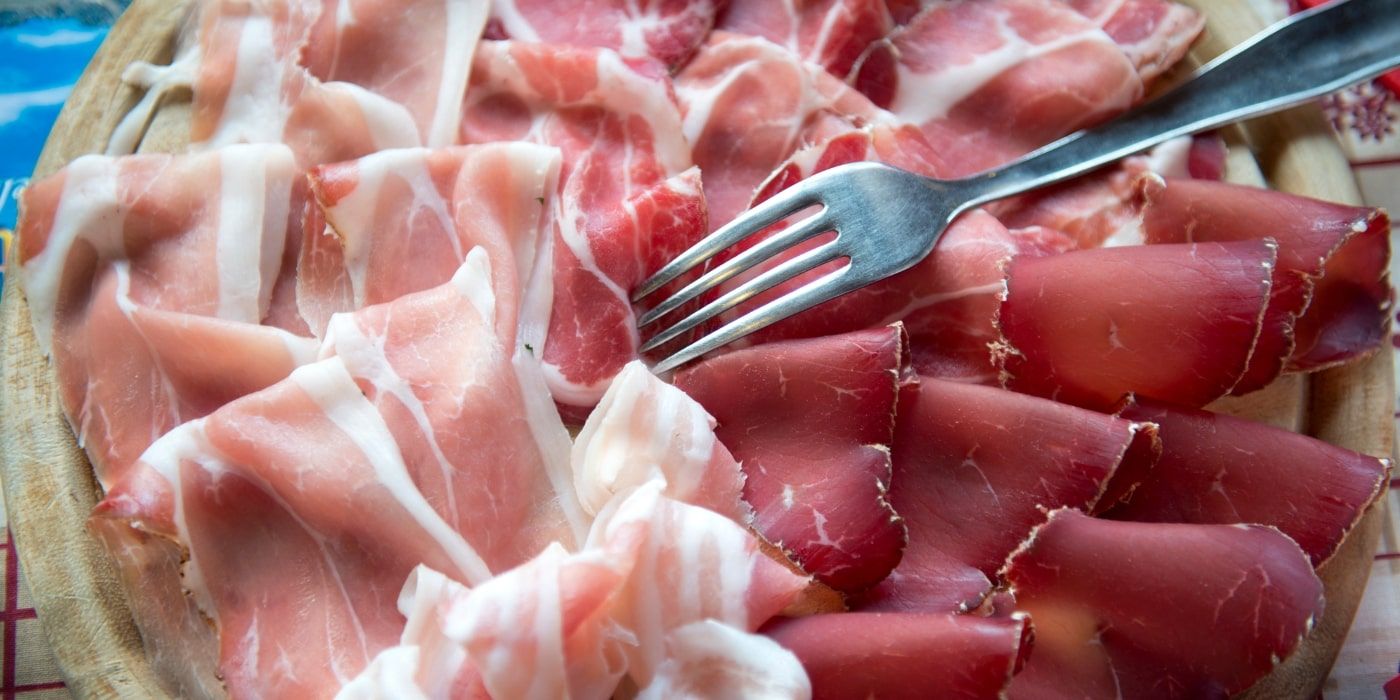Are you ready for an extraordinary culinary journey through Italy? We will explore the magical world of Italian prosciutto, one of the gastronomic treasures of the Bel Paese. This delicious cured meat is a beloved delicacy around the world and represents the heart of Italian culinary traditions.
Italy, the home of prosciutto, boasts a wide range of regional varieties, each with its own distinctive character and flavor. But how do you recognize the best Italian prosciutto? In this article, we will reveal the secrets that will enable you to best choose and appreciate this specialty.

Recognizing the best prosciutto, an exquisite art
A good Italian prosciutto is more than just a food; it is a culinary work of art that tells the story of a region and its commitment to quality. Knowing these factors is essential for any connoisseur and lover of Italian prosciutto.
So, get ready to explore Italy through its prosciutto, and discover how to appreciate the best this country has to offer on your table. It is an experience that will take you to the heart of Italian cuisine, and we are excited to accompany you on this extraordinary culinary journey.
Italian prosciutto, with its long gastronomic tradition and reputation for excellence, is one of Italy's culinary gems. Its presence is ubiquitous on restaurant menus around the world, but how can we recognize the best Italian prosciutto? In this article, we will explore the world of high-quality Italian prosciutto and discover the secrets to best selecting and appreciating this delicious delicacy.
Italy is famous not only for its extraordinary variety of regional hams, but also for its dedication to producing high-quality prosciutto. Each Italian region has its own special variant, each with unique characteristics that are developed through centuries-old traditions and different soils. However, regardless of the region of origin, there are key criteria that can help us recognize the best Italian prosciutto among the various options available.
We at Visit Italy, with our deep knowledge of the Italian territory and culinary culture, are here to help you discover the best. Let's start with origin, a key element; look for Italian prosciutto DOP, a mark of authenticity and guaranteed quality. Texture is another key aspect to consider; quality ham should be thin and have the right proportion of lean and fat. Aroma is an important indicator, as an authentic Italian ham should give off a rich and inviting aroma. But the real test is in the flavor: the best Italian ham satisfies the palate with a sublime balance of saltiness and sweetness, offering an unparalleled gastronomic experience. So, for those wondering “How to recognize the best Italian prosciutto", we at Visit Italy are here to guide you in your search for the perfect prosciutto and to introduce you to the best of Italian culinary tradition.
Different type of Italian prosciutto

In Italy, you can find a wide range of hams, each with its own peculiarities. Some of the most renowned Italian hams include Prosciutto di Parma, Prosciutto San Daniele, Prosciutto Toscano, Prosciutto Cotto, and Prosciutto di Carpegna.
1.Prosciutto di Parma: originating in Emilia-Romagna, Prosciutto di Parma is one of the most well-known and beloved. It is known for its sweet and salty flavor and smooth texture. The "Parma" designation is guaranteed only when the ham is produced following strict rules, which include the origin of the pork and the curing method. At the end of the paragraph, by clicking on the button, you can book a fantastic visit to the Parma Ham Museum!
2.Prosciutto San Daniele: hailing from San Daniele del Friuli, in Friuli Venezia Giulia, this ham offers a sweeter and less salty flavor than Parma ham. It is celebrated for its softness and delicate fragrance.
3. Prosciutto Toscano: originating in Tuscany, this ham is generally more aged and possesses a more robust flavor than hams from northern Italy. A light smoking process gives this ham a distinctive flavor. For you ham lover, we at Visit Italy offer you a gastronomic tour in the beautiful city of Florence. Guided by an expert, you will visit the city and taste the real typical Tuscan products such as precisely the Tuscan prosciutto.
4. Prosciutto Cotto: this is the Italian cooked ham, often used for sandwiches. It is cooked and has a milder flavor than raw hams, but the quality can vary greatly.
5. Prosciutto di Carpegna: this prosciutto comes from the Marche region and is known for its intense flavor and long aging period.
Discover the food tour of FlorenceHow to recognize the best Italian prosciutto, the 5 basics

Recognizing the best Italian prosciutto requires a thorough understanding of several key factors. Here's how you can do it through geographic origin, labeling, appearance, labeling, and scent:
Geographical Origin: one of the main ways to recognize an excellent Italian ham is to consider its geographical origin. Some regions of Italy are famous for producing high-quality prosciutto, such as Emilia-Romagna for Prosciutto di Parma and Friuli Venezia Giulia for Prosciutto San Daniele. The protected designation of origin (PDO) is an important indicator of authenticity and quality. It guarantees that the ham has been produced following strict traditional rules and that it comes from a specific area.
Labeling: the ham label provides essential information. Check to see if the label shows the place of production, the method of curing, the origin of the pork used, and other important details. These details will give you a clear picture of the ham's origins and characteristics.
Appearance: Look closely at the appearance of the ham. The best Italian prosciutto should have a uniform coloration, with a slightly marked grain. The fat should appear white and evenly distributed. The ham's attractive appearance is often a sign of quality, as it indicates careful processing and proper curing.
Label: the presence of a quality label is an important indicator. Many high-quality hams are guaranteed by consortia of producers who carefully monitor the production process. Marks such as "Consorzio del Prosciutto di Parma" or "Consorzio del Prosciutto San Daniele" are signs of authenticity and controlled quality. Be sure to look for these marks on labels. At the end of the paragraph, by clicking on the button, you can book a fantastic visit to the Parma Ham Museum!
Aroma: the aroma of the ham is crucial in assessing its quality. A good Italian prosciutto should give off a fragrant, inviting aroma reminiscent of the meat and its curing environment. The aroma should be fresh and appetizing, a sign of a well-cured ham.
Discover Parma Prosciutto MuseumHow to recognize the best Italian ham: texture and curing
The curing of Italian ham is a crucial process that gives this sliced product its unique flavor and texture. To recognize the best Italian prosciutto, it is essential to understand the importance of curing and the signals it provides. Italian ham is cured for a variable period of time, which can last from several months to several years, depending on the specific type. During this process, the ham undergoes a series of transformations that help define its flavor and texture. Curing involves drying and aging the ham in controlled conditions, such as cellars or curing rooms. During this period, the ham loses moisture, which concentrates its flavor and makes it more intense.
To recognize the best Italian prosciutto through aging, it is important to consider the length of the process. A well-cured ham will have a richer and more complex flavor than a less-cured one. In general, raw hams, such as Prosciutto di Parma and Prosciutto San Daniele, are aged for a period of at least 12 months, but high-quality hams can be aged for several years. Cooked ham, on the other hand, has a shorter maturation period.
In addition, the texture of the ham is an indicator of the quality of curing. A good Italian ham should be soft but not too fat, with an even grain. Curing helps to make the ham tender but at the same time compact the meat, which is a sign of good processing.
The texture and consistency of Italian ham play a key role in determining its quality and goodness. Recognizing the best Italian prosciutto through these attributes requires a careful and sensitive understanding of the details.
Consistency and Texture of Prosciutto Crudo: Italian prosciutto, such as Prosciutto di Parma or Prosciutto San Daniele, should have a soft but not overly fatty texture. When you touch the ham, you should feel some resistance, but it should yield easily when you eat it. The grain of the meat should be even, and the fat well distributed. A texture that is too dry or too fatty can be an indicator of an inferior quality ham. High-quality ham should melt in the mouth, revealing a rich, complex flavor that gradually permeates.
Consistency and Texture of Cooked Ham: In contrast, cooked ham has a softer, more tender texture. Slices of cooked ham should be easy to separate and have a soft but not floury texture. The meat should be moist and full of juiciness, while the fat should be thin and delicate. High-quality cooked ham offers a pleasant texture on the palate, with a mild and sweet flavor.
To recognize the best Italian prosciutto based on texture and consistency, it is important to rely on your senses. The texture should be uniform and the cut of the slices should be clean and precise. In both raw and cooked ham, the balance between meat and fat is essential: too much fat can weigh down the flavor, while meat that is too dry or tough can be uninviting.
In addition to visual observation, touching the ham and tasting it is a crucial step. A good Italian ham, whether raw or cooked, should satisfy with a well-balanced texture and a texture that blends harmoniously with the flavor. A high-quality prosciutto should represent the Italian culinary art in its most exquisite and inviting form.
The use of ham in cooking

The use of prosciutto in cooking is a culinary practice that has its roots in the rich Italian tradition, but has now won over chefs and food enthusiasts around the world. Prosciutto, both raw and cooked, is a versatile ingredient that adds a touch of flavor, elegance, and complexity to a wide range of dishes. In the kitchen, prosciutto crudo, such as the famous Prosciutto di Parma or Prosciutto San Daniele, is often served thinly sliced and can be used in a multitude of ways: wrapped around cheeses, such as melon and the famous "prosciutto e melone," or enriching salads and pastas. Its savory and salty flavor can also contrast or balance the flavors of other ingredients in dishes such as risottos, pizzas, and gourmet sandwiches. On the other hand, cooked ham is a key ingredient in many preparations, such as croquettes, dumplings, canapés, and stuffed flatbreads. In addition, it is widely used to add a touch of elegance to dishes, such as rolls stuffed with meat and cheese. Its sweetness and soft texture make it suitable for many combinations. Ham is a constant presence in the kitchen, where its distinctive flavor, versatility, and ability to harmonize and complement dishes make it an indispensable ingredient for those who love good food.
About the author
Written on 20/11/2023



Genny Lacava
Discover, with us at Visit Italy, how to recognize the best Italian prosciutto and immerse yourself in the culinary art of excellence.